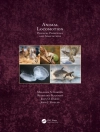Dale’s Principle postulated that a neuron functions as a metabolic unit, whereby a process occurring in the cell can influence all of the compartments of that given neuron. This was unfortunately transformed in the literature to a principle stating that “a single cell releases only one neurotransmitter”. Until recently, this has influenced many neuroscientists to consider with skepticism the idea that classical neurotransmitters could be co-released from neurons.
It is now clear that the “one neuron, one neurotransmitter” postulate is the exception rather than the rule. The aim of this book is to gather the available evidence, provided by the authors that have discovered and studied the co-existence or co-release of several pairs of neurotransmitters, in several neural networks. It will provide a timely overview of a mechanism of neural communication that is likely to attract increasing attention of the neuroscientific community.
Spis treści
Coexistence of Neuromessenger Molecules — A Perspective.- : Out of One, Many.- Mechanisms of Synapse Formation: Activity-Dependent Selection of Neurotransmitters and Receptors.- Co-Release of Norepinephrine and Acetylcholine by Mammalian Sympathetic Neurons: Regulation by Target-Derived Signaling.- GABA, Glycine, and Glutamate Co-Release at Developing Inhibitory Synapses.- GABA is the Main Neurotransmitter Released from Mossy Fiber Terminals in the Developing Rat Hippocampus.- Postsynaptic Determinants of Inhibitory Transmission at Mixed GABAergic/Glycinergic Synapses.- Glutamate Co-Release by Monoamine Neurons.- Dopamine and Serotonin Crosstalk Within the Dopaminergic and Serotonergic Systems.- The Dual Glutamatergic/GABAergic Phenotype of Hippocampal Granule Cells.- Synaptic Co-Release of ATP and GABA.- The Co-Release of Glutamate and Acetylcholine in the Vertebrate Nervous System.- Colocalization and Cotransmission of Classical Neurotransmitters: An Invertebrate Perspective.- : Out of Many, One.
O autorze












